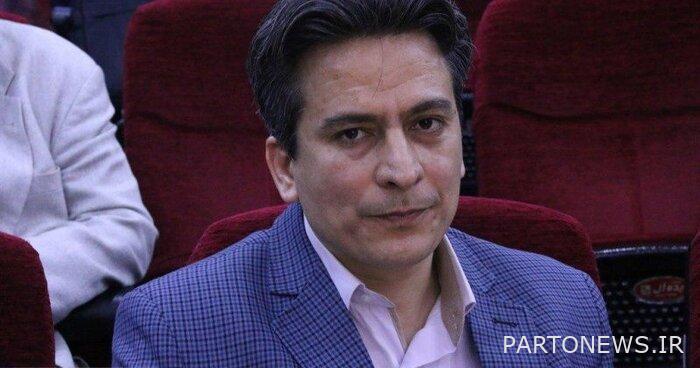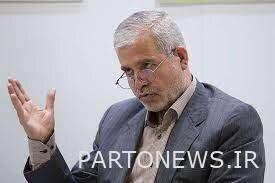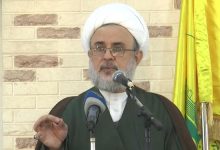Nowruz Peace and Diplomacy – IRNA

The international conference “Academics and Peacebuilding in the Nowruz Cultural Region” was held on Wednesday, February 11, with the participation of professors from 13 countries in the region. The conference was attended by the Scientific Association of Peace Studies of Iran and the ECO Cultural Institute with the scientific support of Allameh Tabatabai University in Tehran, Arles University in Istanbul and North Ossetia State University in the Russian Caucasus. In Kazakhstan, the Institute of Cultural and Social Studies, the University Publishing Center, the Central Eurasian Studies Center of the University of Tehran, the House of Humanities Scholars, the Caucasus Studies Foundation, and the Iranian Association for Regional Studies participated.
Nowruz; The salt of Iran’s foreign policy
“Mohsen Khalili” faculty member of the Department of Political Science, Ferdowsi University of Mashhad He gave a critical speech on the use of Nowruz in foreign policy. In this regard, he says: When we talk about Nowruz and foreign policy, we want to unite two unconventional genres, one of which we have named “Parniani and Saffron” and the other “Iron-given iron”. The meaning of Yamani iron is the same characteristics that we expect from foreign policy, and the meaning of play and saffron is the same thing that we expect from Nowruz. So it is very difficult to connect the two.
Khalili continues his speech on the politics of dealing with Nowruz in the country and states: We have not looked at Nowruz correctly in our political view and we have preferred other holidays to Nowruz, which was a mistake. For this reason, in foreign policy, we must first correct our behavior regarding Nowruz and then invite it to the foreign policy table. So until we correct this lazy behavior, using Nowruz will destroy Nowruz itself. Therefore, it is better to change our behavior style, and if we change our behavior style in the field of foreign policy, when others are invited to celebrate Nowruz, it is probably not an Iranian-centered view of Iran, but as a cultural concept that can go beyond Go through the borders of a country, they will see. So Nowruz can not be food for Iran’s foreign policy, but it can be salted under the terms and conditions.
Lack of identity and culture of historical awareness Peace in the Nowruz region
“Ali Ashraf Nazari” Associate Professor, Department of Political Science, University of Tehran He began his speech by saying that we should ask a serious question in academic disciplines, to what extent is the historical relationship between culture and identity in the curriculum related to the Nowruz region ?; That is, with the ideas and contexts and what we refer to as a sense of belonging. Or how can we analyze existing identities in relation to collective memories, symbolic policies, and the system of signs, codes, symbols, etc., in order to disprove the idea of regional peace? The fact is that in the sources and topics and texts that we teach in universities, we see a kind of great neglect of the position of cultural and historical symbols, and we have not been able to create cultural and historical awareness. Thus, we have not acquired a proper understanding of this cultural self-awareness and identity that can create a common understanding.

“There are many students in other countries, such as Tajikistan, who do things for Iranian identity, but Iranian students do not pay attention to this important issue,” Ashraf Nazari said. While they pay attention to these cultural affiliations and civilizational commonalities with an empathetic language and a purely cultural perspective. So we need to provide a context that helps us to see identity as a field of opportunity and to create new perspectives while at the same time understanding the limitations that exist in this area.
Iranian academics and the approach of the civilized government in public diplomacy towards the Nowruz cultural region
“Mohammad Jafar Javadi-Arjomand” Associate Professor, Department of Political Science, University of Tehran Considering civilization as the basis of analysis, it deals with the role of civilization and culture in Iran’s foreign policy towards the Nowruz cultural region.
Javadi Arjmand first to Nowruz; Continuation in historical conflicts and says: Cultural Iran means cultural, historical and mythical commonalities between countries or nations that, although in the current situation are politically and legally independent and their sovereignty is respectable, but culturally and civilly solidarity And historical events are noteworthy. This cultural and civilizational harmony can be exemplified in the existence of different from rituals to historical figures and sages. Nowruz is one of the most important manifestations of such historical and cultural commonalities. The meaning of Nowruz celebration throughout its history has highlighted it as the oldest famous Iranian ritual. Celebrating such a celebration in the geographical area, it is worth considering that the ritual of Nowruz is a common cultural component among the people of the land with multiple beliefs, diverse coverings and different languages. In fact, the ritual of Nowruz is the manifestation of a common mentality or historical memory among the people of a field of civilization that has continued from ancient times to the Islamic period and the contemporary era.

Associate Professor of Political Science, University of Tehran, continues to focus on the field of Nowruz civilization in the contemporary period and adds: Reflecting on cultural geography, we can say that Nowruz is one of the most serious components of identity that, along with other experiences and memories, It is historically and culturally connected. Nowruz is a symbol of the continuity and common historical continuity and historical memory of the people of the Iranian civilization. Extends to include Iran, the Caucasus, the Kurds of the Middle East, and some Arabs to Tajikistan, Kazakhstan, Uzbekistan, Turkmenistan, Afghanistan, Pakistan, and India.
In the end, Javadi Arjumand deals with the issue of Iranian academics and the Nowruz cultural region and states: Iranian academics can play a role in the field of public diplomacy more than any other group or current. Due to the role of historical, cultural, civilizational and identity issues of Iran, they can be used to raise awareness and increase the country’s prestige. Such a cultural and civilized reading is the responsibility of academics. Listening and speaking is an important issue in public diplomacy that Iranian academics can play more than any other group. The influence of civil society and the educated middle class in foreign policy helps to increase the government’s global credibility and recognition. By acting in Iranian public diplomacy, Iranian academics and intellectual elites can return to the culture and assets of civilization and make the necessary arrangements for achieving maximum understanding for peace and the pursuit of common interests.

